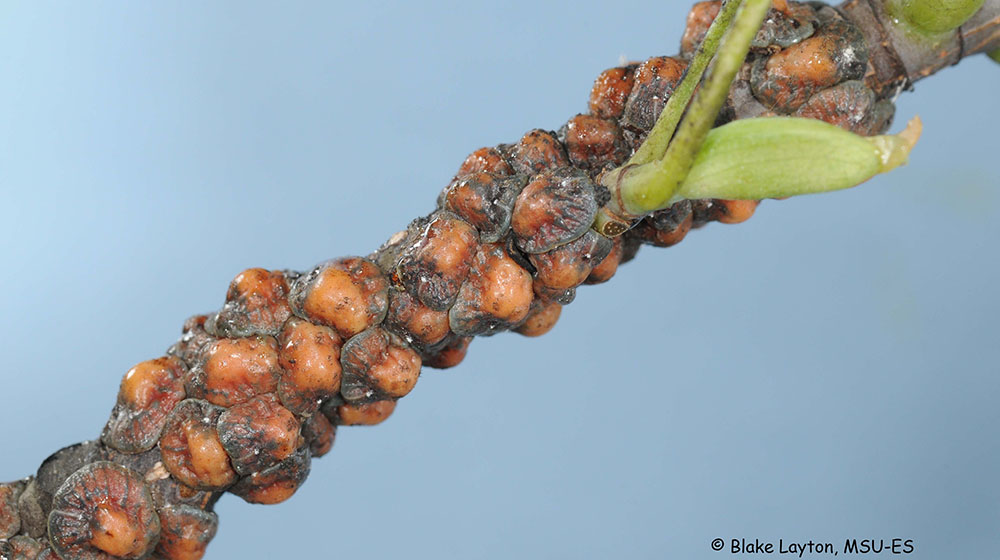Tulip Tree Scale, No 12
Related News
June 17, 2015
June 4, 2015
May 19, 2015

Tulip Tree Scale
Toumeyella liriodendri
Order: Hemiptera
Family: Coccidae
This tulip tree twig is heavily encrusted with tulip tree scale (mature scales are about ¼ inch wide at their base). Tulip trees, a.k.a. yellow poplar trees, occasionally suffer heavy outbreaks of tulip tree scale. Infestations are more common some years than others, but trees located along routes of mosquito spray trucks are especially prone to infestations. These large scales can build to extremely heavy infestations, covering most of the twigs and small branches of a tree. They also produce huge quantities of honeydew, resulting in heavy accumulations of sooty mold and attracting large numbers of bees and wasps to feed on the honeydew. Heavy infestations make trees unsightly and cause limb die back and can even kill entire trees. In most areas of the country, there is only one generation per year. Mature female scales produce crawlers in late-summer, and the crawlers settle on new twig growth to begin feeding. These insects overwinter on the twigs as partly grown nymphs to resume development the following spring. A single female can produce several thousand crawlers.
Control: Heavy infestations often gradually go away on their own as a result of natural biological control, but this can take a few years. For faster control of heavy infestations, apply systemic insecticides containing imidacloprid to the soil immediately surrounding the trunk, being sure to follow label directions. Do not treat trees that are in flower. Water before treating to assure the soil is adequately moist. Such treatments are best applied in late-winter to early spring when immature scales are actively feeding, but late summer applications can also be effective against newly settled crawlers. It can take several months to see the full effects of such treatments. Scales do not fall from the twigs when killed, but they will stop producing honeydew. Systemic insecticides such as imidacloprid or dinotefuran can also be applied as trunk injections by licensed professional applicators, and trunk injections may provide faster control than soil-applied treatments. Properly timed crawler sprays and dormant oil sprays are alternative methods of control, especially on small trees, but such treatments are usually impractical for larger trees.
See Insect Pests of Ornamental Plants in the Home Landscape, pages 7-9 and pages 35 & 36 for more information.
Blake Layton, Extension Entomology Specialist, Mississippi State University Extension Service.
The information given here is for educational purposes only. Always read and follow current label directions. Specific commercial products are mentioned as examples only and reference to specific products or trade names is made with the understanding that no discrimination is intended to other products that may also be suitable and appropriately labeled.